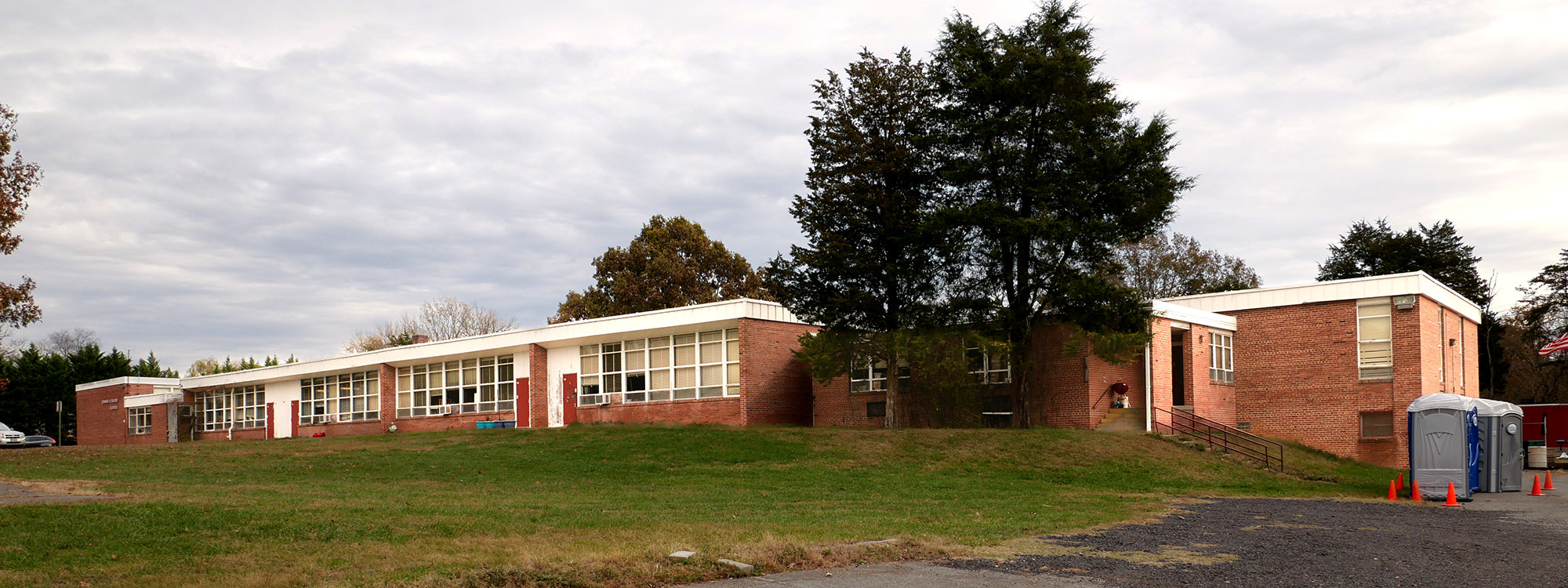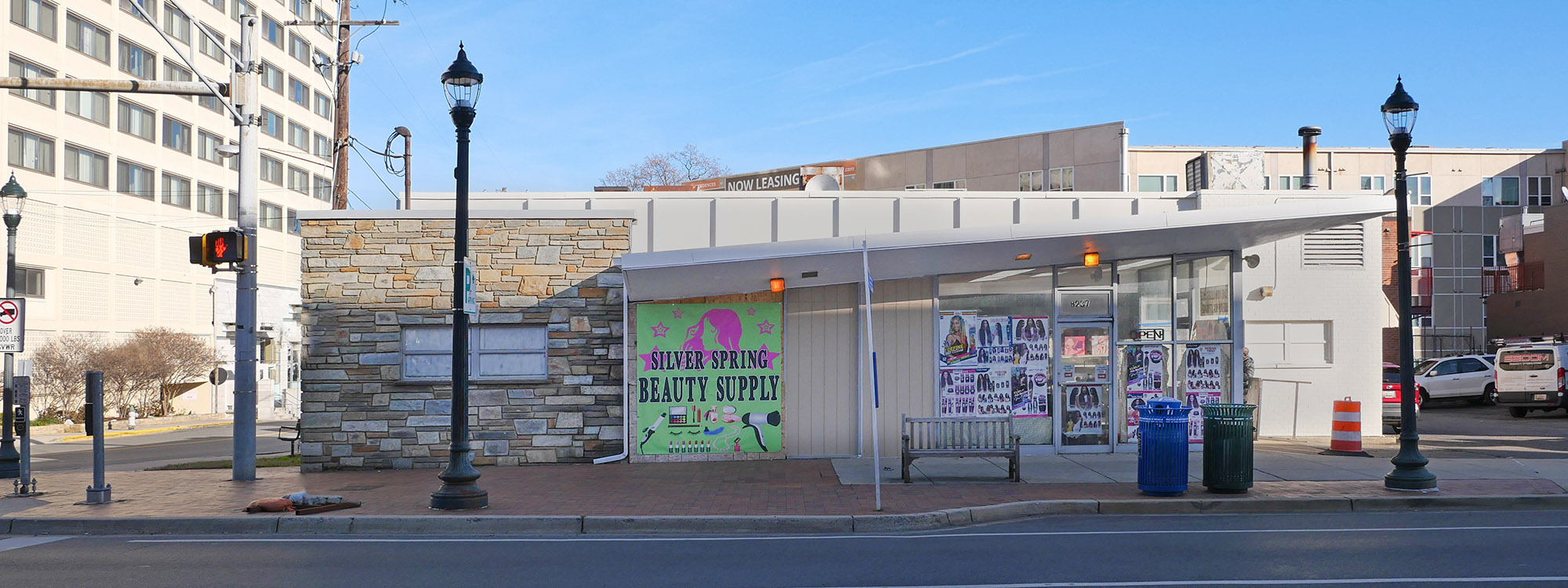

The Montgomery County Planning Board will consider the Edward U. Taylor School and Weller’s Dry Cleaning sites for historic designation
WHEATON, MD – The Montgomery County Planning Board, part of The Maryland-National Capital Parks and Planning Commission (M-NCPPC), will consider the Edward U. Taylor School and Weller’s Dry Cleaning sites for historic designation at the Planning Board meeting on February 23, 2023. The public is invited to offer testimony during the public hearing either in person or virtually. At the meeting, the Planning Board will make a recommendation for or against designation which will be sent to the Montgomery County Council for their final decision. The last amendment to the Master Plan of Historic Preservation was the historic designation of the Potomac Overlook District in 2022.
View the public hearing draft of the amendment.
“We are so pleased to bring two important Montgomery County sites to the Planning Board for their consideration for historic preservation,” said Montgomery County Planning Department Historic Preservation Office supervisor Rebeccah Ballo. “Historic preservation is an integral part of planning, economic development and what makes our community special.”
The Edward U. Taylor School
The former Edward U. Taylor School (19501 White Ground Road, Boyds, MD) was built as an elementary school for Black students at a time when Montgomery County used legally sanctioned racial segregation to prohibit Black children from attending white schools. The Modern Movement-influenced building was completed in 1952, and features several additions built between 1954 and 1969. The facility was built to modern school design standards and represents the cumulative efforts of the county’s Black community to obtain better facilities and opportunities after decades of public underinvestment in educational facilities for Black children. The building currently serves as the Taylor Science Center for the processing and storage of science kits for Montgomery County Public Schools.
The recommendation to study the school was brought forward in the MARC Rail Communities Plan, which was approved by the County Council in April 2019.
Weller’s Dry Cleaning
The former Weller’s Dry Cleaning site (8237 Fenton Street in Silver Spring, MD) consists of a Googie-styled commercial store and sign constructed in 1961. The Googie style is a popular, but relatively rare, mid-twentieth century roadside commercial architecture that is a subset of the Modern Movement of architecture. Architects popularized the style in California where the intention was to attract motorists traveling at 35 miles per hour or more to stop and patronize roadside businesses. The design of the Weller’s Dry Cleaning building and sign engaged the everyday consumer with a modern and popular architecture in lieu of the high-style austerity of the International, Brutalist, and Expressionist styles. As a result, the site is a visual landmark for residents and visitors within the Thayer Avenue commercial area and greater Downtown Silver Spring. Very few examples of this architectural style remain intact in the county or region.
The site was originally identified for evaluation as an historic resource over twenty years ago in the Historic Sites Survey Report: Silver Spring Central Business District (2002). The Silver Spring Downtown and Adjacent Communities Plan (2022) directed the Planning Department to evaluate the Weller’s Dry Cleaning site designation as a Master Plan Historic Site.
Evaluation Process
The decision whether to place a resource on the Master Plan for Historic Preservation is based on criteria set forth in Chapter 24A-3 of the County Code. The decision to designate a property begins with a completed research form from The Maryland Historic Trust and is reviewed by the Historic Preservation Commission (HPC), the Montgomery County Planning Board, and the Montgomery County Council. When the County Council includes a property in the Master Plan for Historic Preservation, then exterior changes must be reviewed by the Historic Preservation Commission before issuance of any permits.
Examples of current Master Plan Historic Sites and Districts include:
- Archeological sites and mill ruins along stream valleys
- Farms, banks and meeting houses, associated with the Quaker heritage
- Lock houses, aqueducts, mines and quarries, boarding the Potomac River and the Chesapeake & Ohio (C&O) canal
- Rivers fords and encampment sites of the Civil War
- Early African-American communities
- Early suburbs developed along the route of the Baltimore & Ohio (B&O) railroad
- Small-scale commercial blocks and gas stations from the early automobile era
- Major government complexes such as the Bethesda Naval Hospital and the National Institute of Health
- Postwar housing that shaped suburban development
About the Historic Preservation Office
The Montgomery County Planning Department’s Historic Preservation Office (HPO) identifies, protects, and explores historically significant built places throughout the county, ultimately preserving the past to enrich the future. HPO is responsible both for administering regulations around designating and maintaining historical sites and for digging into the county’s history to better inform the decision makers planning our future.
As part of Montgomery Planning, HPO constantly strives to help improve the natural and built environments of Montgomery County. The county’s historic fabric has irrevocably informed every corner of the county, from the Ag Reserve to Silver Spring, and understanding HPO’s role is a critical part of planning. Americans are aware of such public history in ways that they have not been in a generation, and HPO aims to share that history as broadly as possible.
Though the Historic Preservation Office focuses on the built environment (which distinguishes us from other historic societies), HPO also has resources for genealogy, tax credits, and more. From restoring and promoting specific sites to painting a more complete picture of the diverse people and places that shaped—and continue to shape—the modern Montgomery County, HPO helps ensure that future plans are informed by and reflected in a thorough, critical appreciation of what came before. History lives with us in the present.